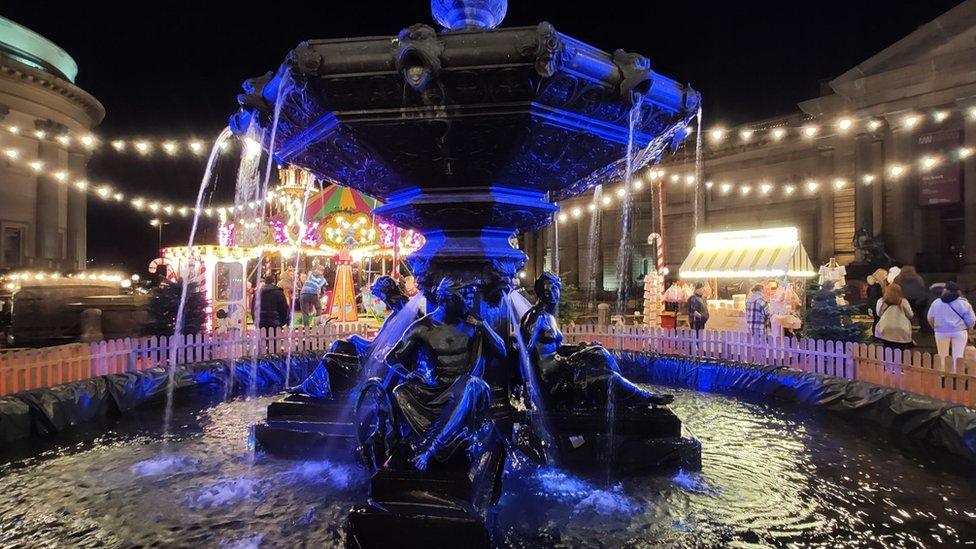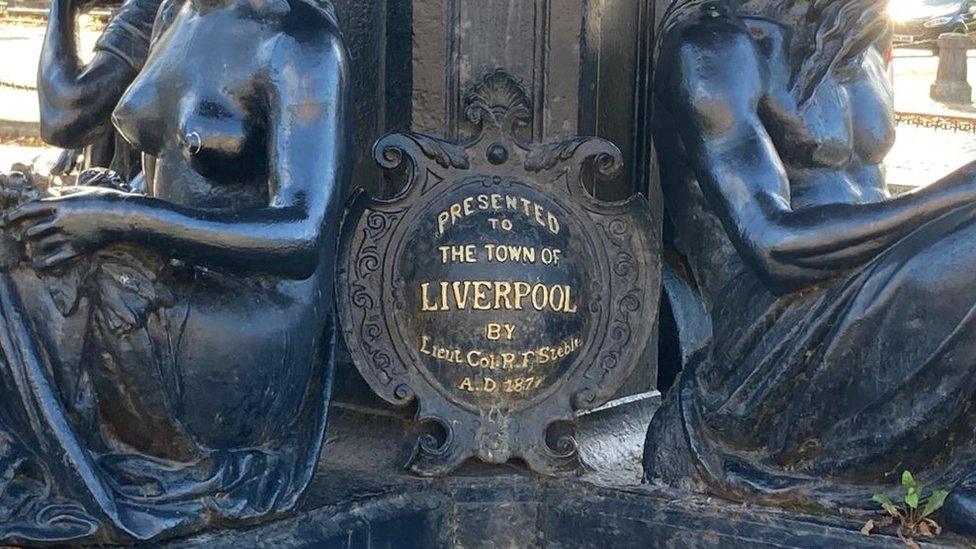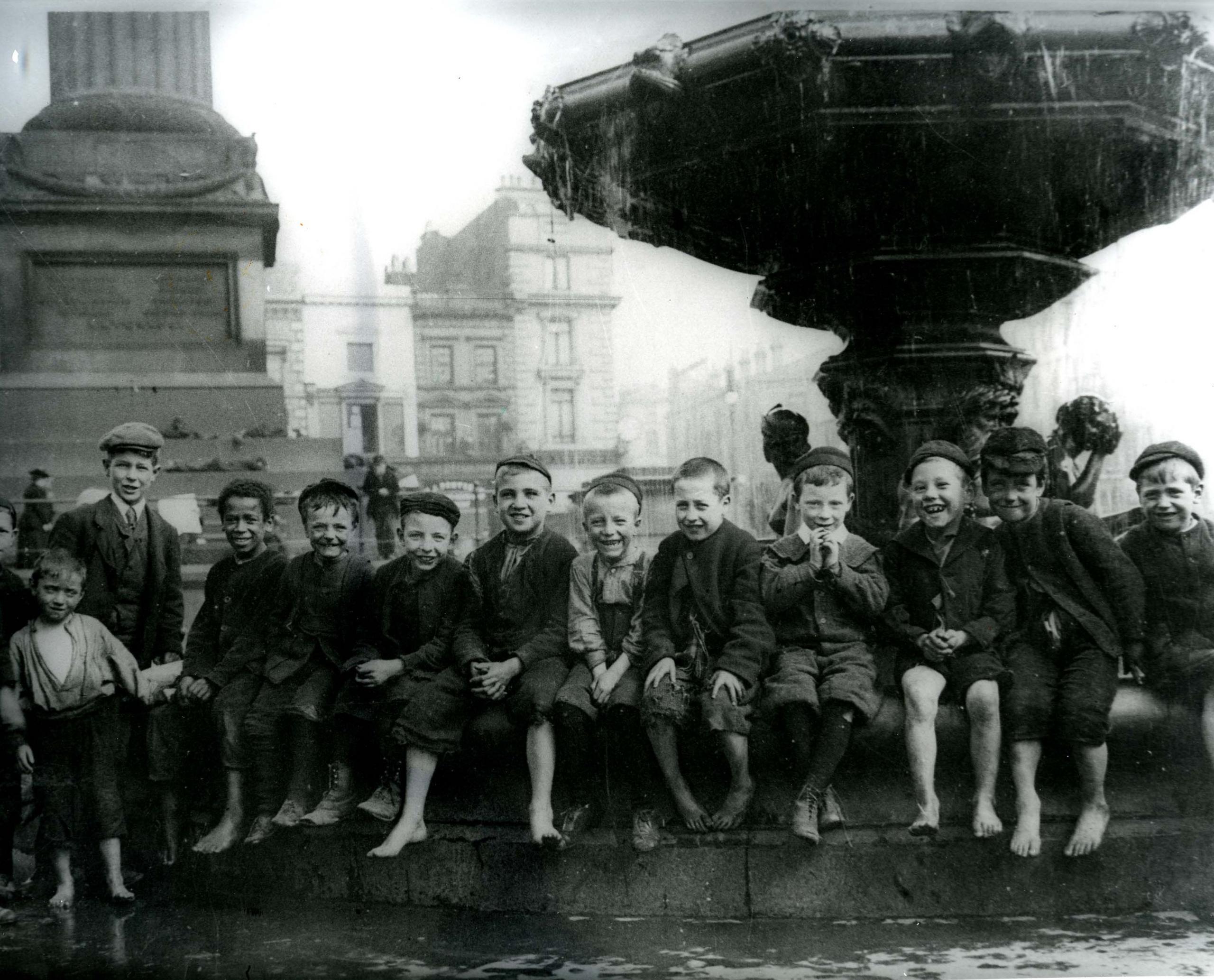Liverpool's Victorian fountain flows again after temporary fix
- Published

The Steble Fountain was switched off more than 10 years ago
A Grade II-listed fountain at the heart of Liverpool's cultural quarter has been temporarily brought back to life.
Heritage campaigners are celebrating after water began flowing from the Steble Fountain, which was switched off more than 10 years ago.
A former mayor of Liverpool, Richard Steble, had the fountain built in 1877.
Liverpool Councillor Harry Doyle said it was a temporary fix but plans were in place to return the William Brown Street landmark "to its former glory".
Mr Doyle, cabinet member for culture and visitor economy, said: "The reaction to it working once again has been incredible, with lots of people sharing their memories of the fountain.
"We are looking at various funding options which would enable us to carry out essential repairs."

The classical fountain was erected when Liverpool was still a town
Councillor Maria Toolan, who has been calling for the renewal of the Victorian landmark for more than two years, said it was an "incredible attraction" that should be fully restored.
"We are now looking at securing a water source," she said.
Blue Badge guide Marie Passey said the statue was "very well preserved", adding: "The sculptures are still sharp and crisp cast iron - they're all Greek deities."
Retired mayor Mr Steble had donated £1,000 for the fountain, designed by French artist Paul Lienard, to fill a wasteland that was blighting the area, she said.
At the time, Liverpool was coming under criticism for allowing the fountain's site to spoil the "magnificent" buildings nearby, including St George's Hall, the Walker Art Gallery and what is now the World Museum and Central Library.

Gordon Stretton (third from left) who became a famous jazz artist, at the Steble Fountain in 1890
Ms Passey recalled how a "grumpy judge" working at St George's Hall had complained about the noise of the steam pump which powered the fountain shortly after it was opened, leading to the water being cut off for a short period.
Liverpool Record Office archives show how the fountain was well used throughout its history, with images of Victorian families and barefoot children playing in the waters.
They include records of William Masters, who became a famous jazz artist under the stage name Gordon Stretton, at the Steble Fountain during his childhood.
"The reaction to it working once again has been incredible, with lots of people sharing their memories," Mr Doyle said.

Why not follow BBC North West on Facebook, external, Twitter, external and Instagram, external? You can also send story ideas to northwest.newsonline@bbc.co.uk, external